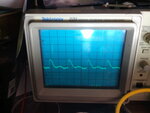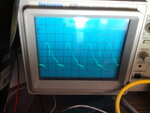JMG
Member level 3

I have a buck-boost design that currently works ok-ish. At 27 - 40Vin the driver is stable and delivers full load. At 22 - 27Vin the output caps squeal and the output is electrically noisy. The design calls for 22 - 40Vin so this needs to be fixed.
I have spoken with tech support for the driver IC and after looking through my numbers, schematic and layout he thinks its FET related, and if that doesnt fix it my current sense needs to be a little closer to the driver IC.
He thinks the gate charge is too high. I have 2 FETs in this design and one gets hotter than the other yet they are both in parallel and next to each other on the pcb. I am using 2x STB75NF20's and he is recommending I change to 2x IRF6646's.
My understanding of FET's appears to be limited so could someone explain to me how 2x 2.8W FET's are going to work when switching 286W of load?
Thanks.
I have spoken with tech support for the driver IC and after looking through my numbers, schematic and layout he thinks its FET related, and if that doesnt fix it my current sense needs to be a little closer to the driver IC.
He thinks the gate charge is too high. I have 2 FETs in this design and one gets hotter than the other yet they are both in parallel and next to each other on the pcb. I am using 2x STB75NF20's and he is recommending I change to 2x IRF6646's.
My understanding of FET's appears to be limited so could someone explain to me how 2x 2.8W FET's are going to work when switching 286W of load?
Thanks.





